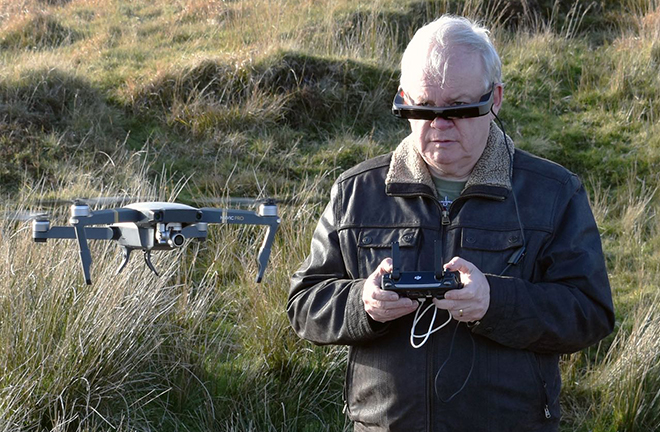VR in the media landscape

Prof. Robert Stone tests a drone. Photo: PROVIDED TO CSST
In the digital era, content is still the most essential element in a media landscape that seeks to cater to people’s needs.
However, the marriage of visualization technologies, such as VR, with content creation is conducive to building a better customer-focused experience.
How to highlight content through the employment of VR? Robert Stone, an emeritus professor from the University of Birmingham, said: “I actually believe that the potential for using VR to enhance news broadcasting is huge. However, for the foreseeable future, technology that is capable of truly immersing media viewers into real-time remote broadcast scenes using VR headsets and associated hardware remains elusive.”
“Until such technology becomes available, affordable and attractive to consumers, most media or news content will remain as 360°, spherical panoramas comprising images and short-duration ‘canned’ videos, annotated 3D scans using cameras capable of integrating multiple pictures and laser measurements, or even very engaging video from 2D and panoramic cameras mounted on drones,” Stone continued. “The results will be viewable on smartphones, tablets or in an online browser. The technical challenges of delivering true VR to headset users during a live report by journalists are considerable.”
Stone believes that the most powerful opportunity for VR in the future of broadcast media and news reporting will be its ability to immerse viewers into remote, extreme environments allowing them to witness evolving scenes of man-made disasters or events.
Delivering such scenes to provide an interactive experience for viewers to be at the center of the “action,” witnessing how extreme situations develop, may well be much more influential in garnering strong viewer reactions and support for humanitarian causes than conventional TV productions.
Not to mention allowing people of all ages and from all cultures to experience something they would not normally be able to – spaceflight, planetary exploration, underwater missions, rescue operations, and so on.
Stone asserts that true VR that can be explored freely has much more potential to engage viewers in real-time, multisensory experiences than that offered by typical green-screen CGI.
However, the key to the successful exploitation of VR in the future of broadcasting will undoubtedly be the choice of content, Stone said.
Future content producers must always question whether VR actually adds something positive to the delivery of the broadcast content.
And, of even greater importance, those same producers must always be aware of the sensitivities and cultural backgrounds of viewers, questioning whether or not immersing them into extreme scenes do more mental harm than good.
Edited by ZHAO YUAN
